by Brooklyn Apr 25,2025
The AMD Radeon RX 9070 arrives at an intriguing time for graphics cards, right after the launch of Nvidia's latest generation, positioning the new $549 card in direct competition with the underwhelming GeForce RTX 5070. Currently, AMD has a clear advantage in this matchup, making the Radeon RX 9070 a standout choice for 1440p gaming.
However, the situation is more nuanced due to AMD's own pricing strategy. The Radeon RX 9070 is only $50 less than the superior Radeon RX 9070 XT. While the 9070 is approximately 8% slower and 9% cheaper than the 9070 XT, the small price gap makes it difficult to justify not spending the extra $50 for better performance. Nonetheless, when comparing two AMD graphics cards, the outlook remains favorable for Team Red.
The AMD Radeon RX 9070 will launch on March 6, starting at $549. However, expect various models to be priced higher. To maximize value, it's advisable to purchase a model as close to the starting price as possible, especially given its proximity in price to the Radeon RX 9070 XT.
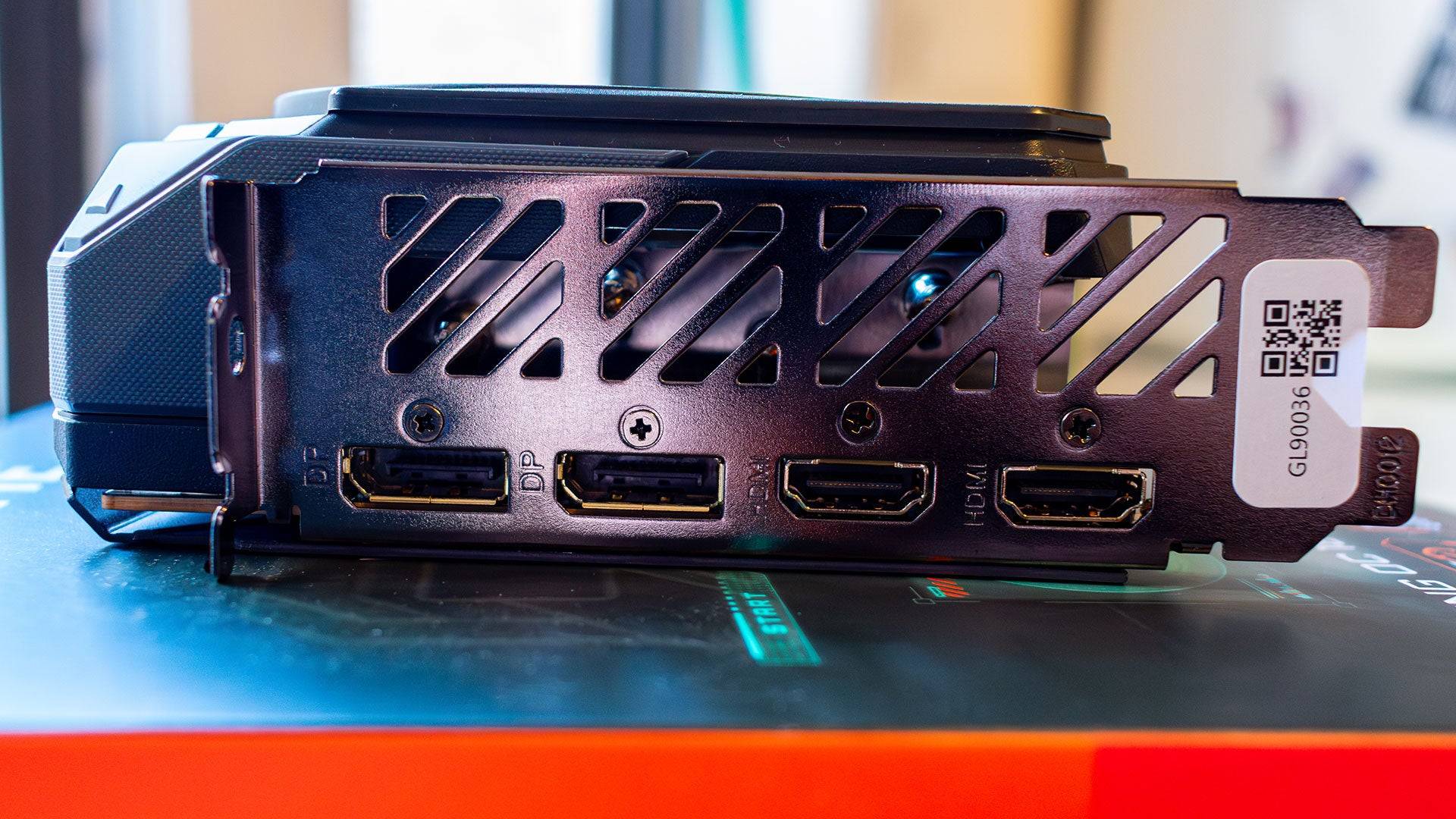
 4 Images
4 Images
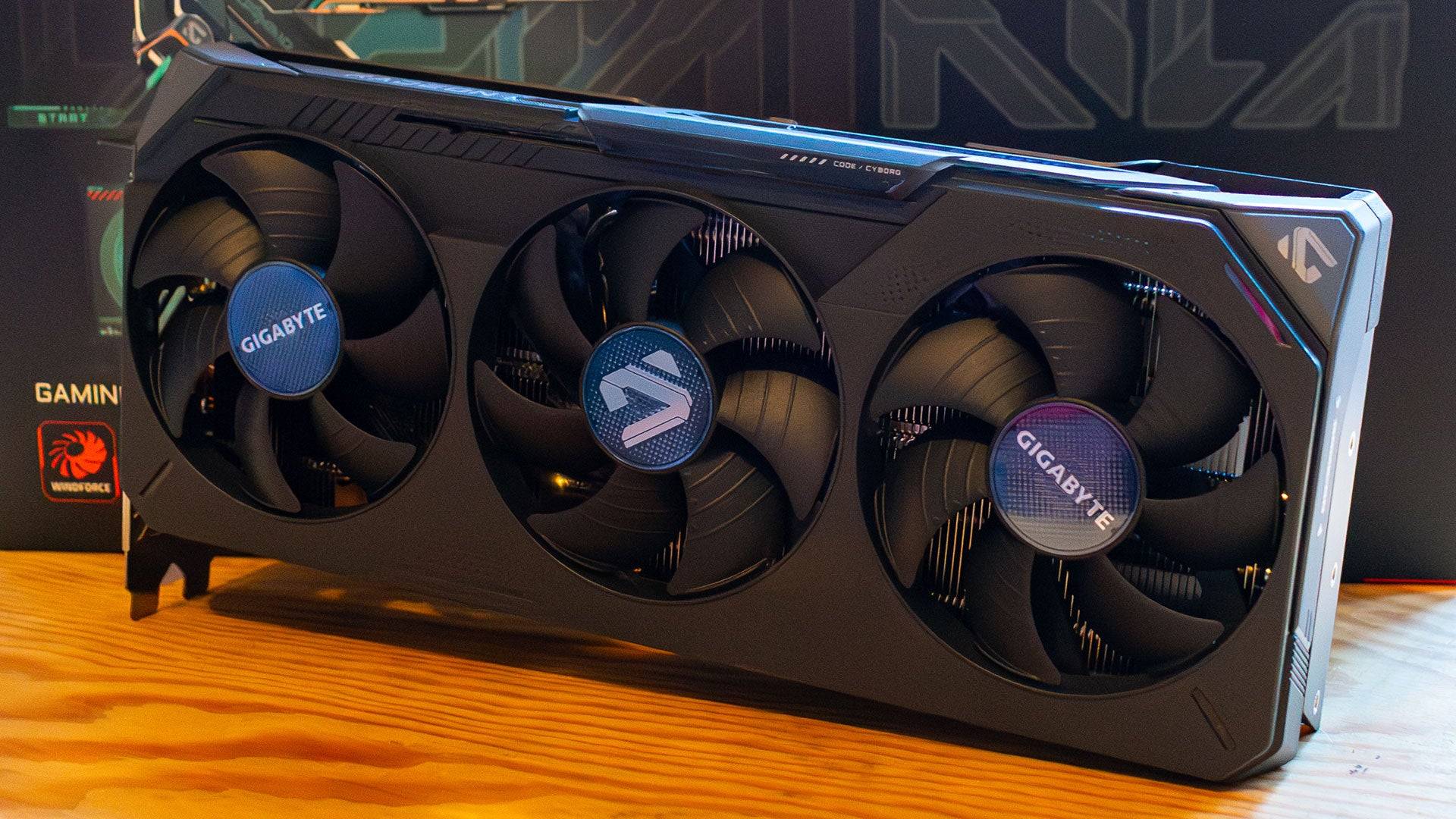
The RX 9070, like the RX 9070 XT, utilizes the new RDNA 4 graphics architecture, significantly enhancing performance. Despite having 30% fewer compute units, it outstrips the last-gen Radeon RX 7900 GRE.
With 56 Compute Units, each boasting 64 Streaming Multiprocessors (SMs), the total shader count reaches 3,584. Each compute unit also includes one Ray Accelerator and two AI Accelerators, totaling 56 and 112, respectively. These enhancements enable the RX 9070 to excel in ray tracing and introduce AMD's FidelityFX Super Resolution (FSR) 4, marking the debut of AI upscaling on AMD GPUs.
The RX 9070 comes equipped with 16GB of GDDR6 VRAM on a 256-bit bus, mirroring the 7900 GRE's memory setup, which is sufficient for 1440p gaming for years to come. Although GDDR7, as used by Nvidia, would have been preferable, it likely would have increased the price.
AMD suggests a minimum 550W power supply for the RX 9070, which has a 220W power budget. Testing showed a peak consumption of 249W, suggesting a 600W PSU for safety.
Notably, AMD isn't releasing a reference design for the RX 9070; all versions will be from third-party manufacturers. The Gigabyte Radeon RX 9070 Gaming OC 16G, a triple-slot card with a slight factory overclock, was provided for review.

Since the rise of DLSS in 2018, AI upscaling has been a key method for boosting performance while maintaining image quality, primarily exclusive to Nvidia GPUs. FSR 4 changes this by bringing AI upscaling to AMD GPUs.
FSR 4 uses previous frames and in-game data to upscale lower resolution images to native resolution via an AI model, improving upon the temporal upscaling of FSR 3, which lacked AI and could result in artifacts like ghosting.
However, FSR 4 incurs a slight performance hit compared to FSR 3. For example, in Call of Duty: Black Ops 6 at 1440p on the Extreme preset, FSR 3 achieves 165 fps, while FSR 4 drops to 159 fps. Similarly, in Monster Hunter Wilds at 4K with ray tracing, the RX 9070 gets 81 fps with FSR 3, but 76 fps with FSR 4.
The Adrenalin software allows users to toggle between FSR 3 and FSR 4, choosing between better image quality or slightly better performance. For single-player games, FSR 4 is preferable, while FSR 3 might be better for fast-paced online games.

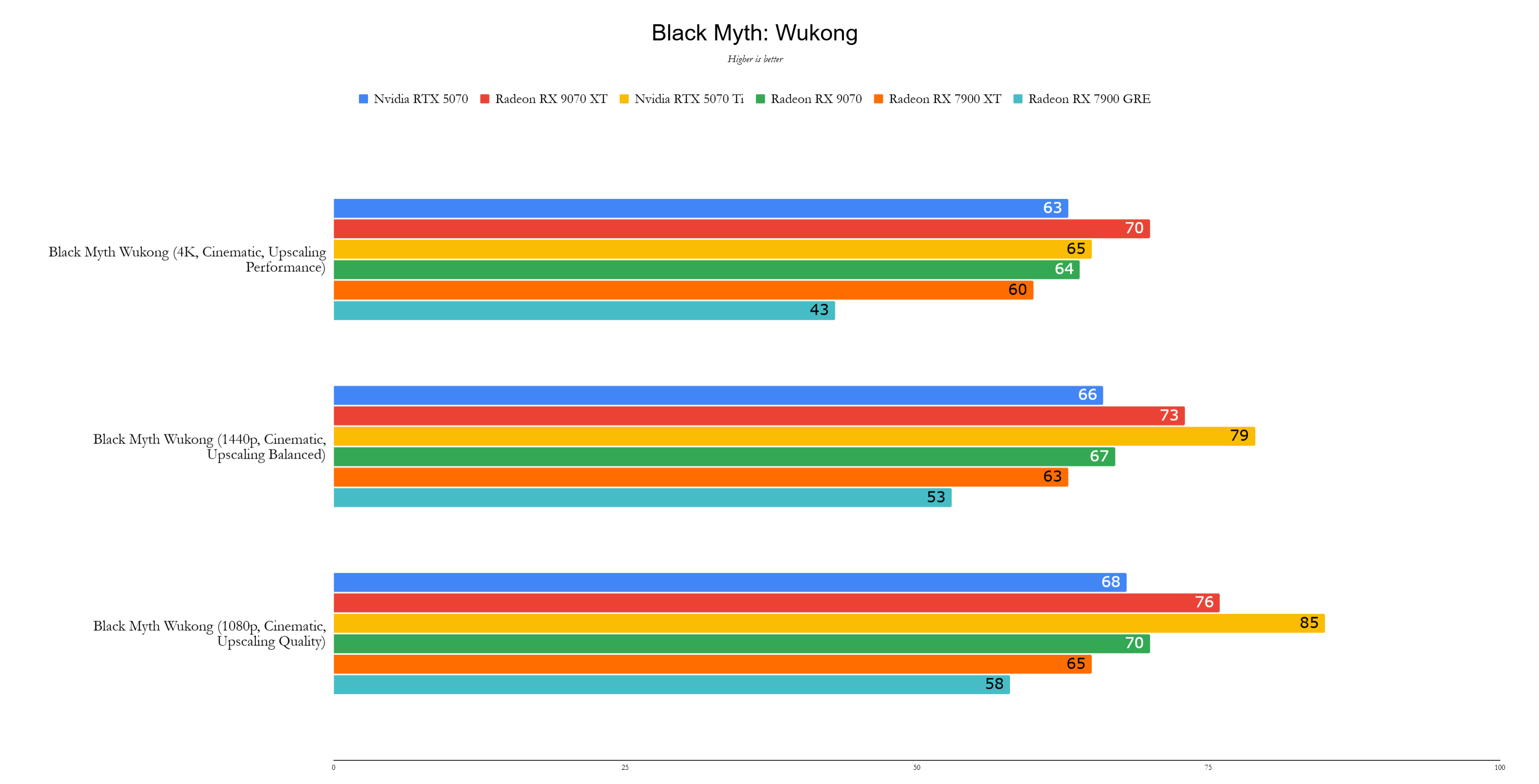 11 Images
11 Images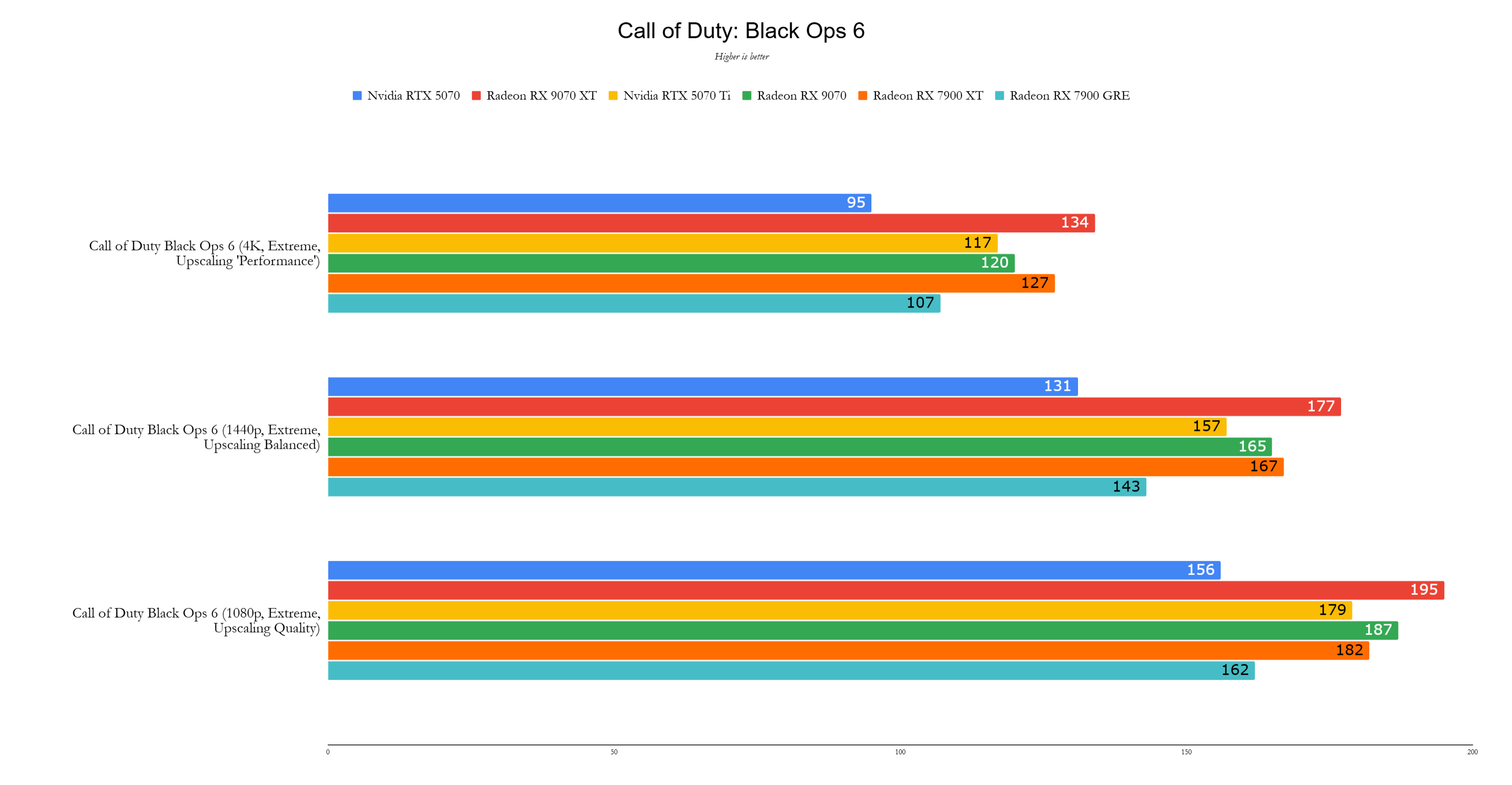
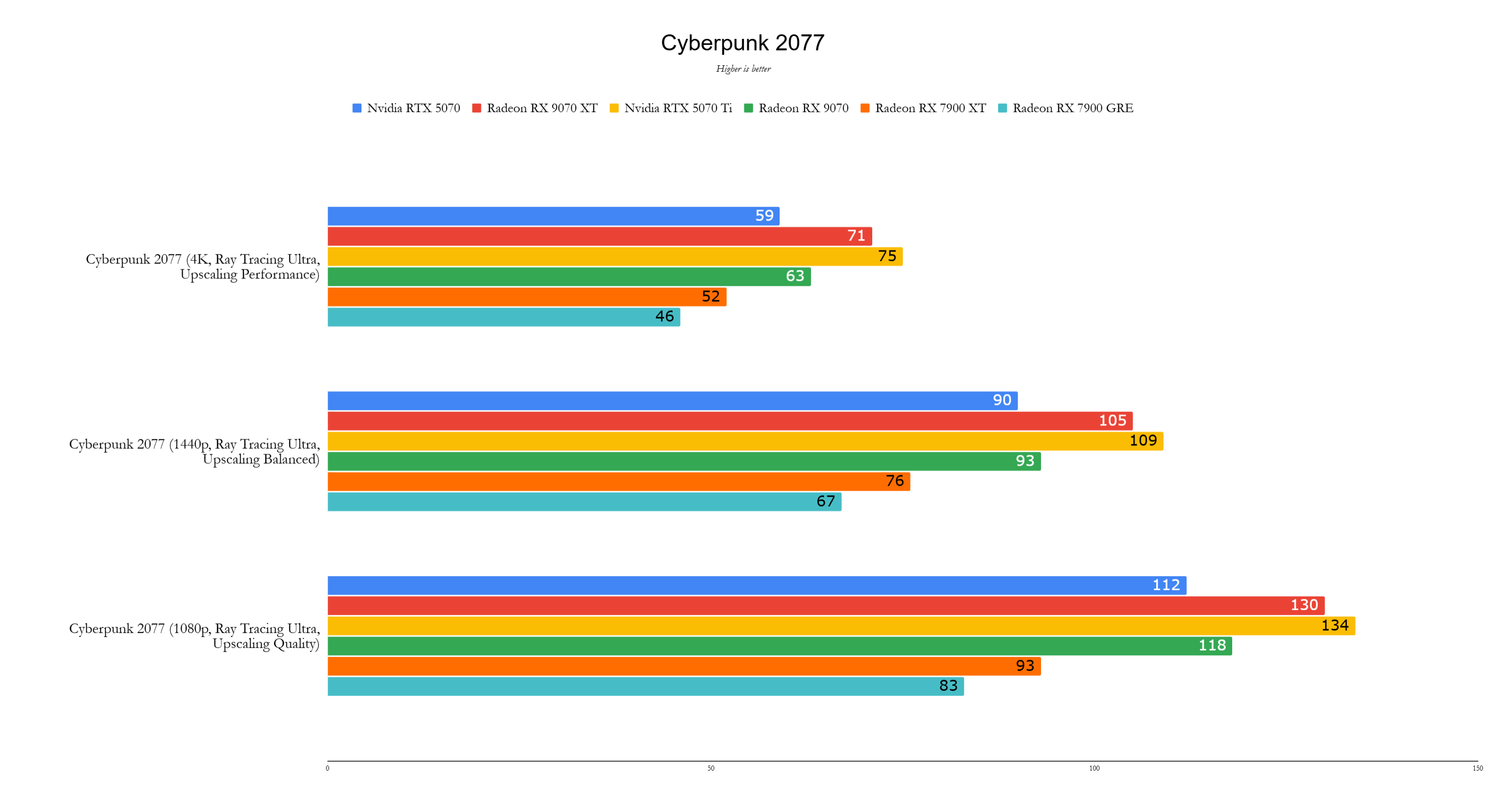
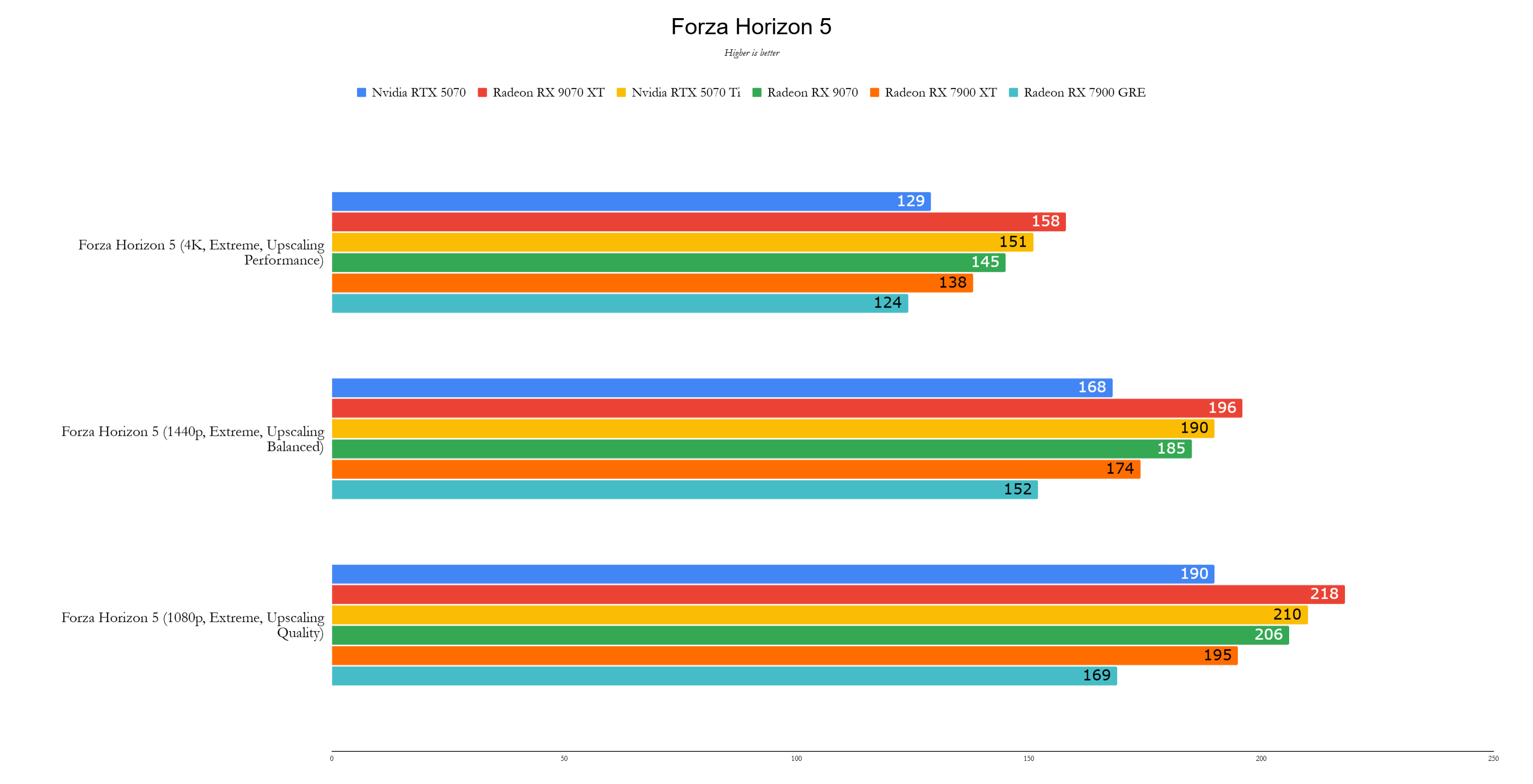
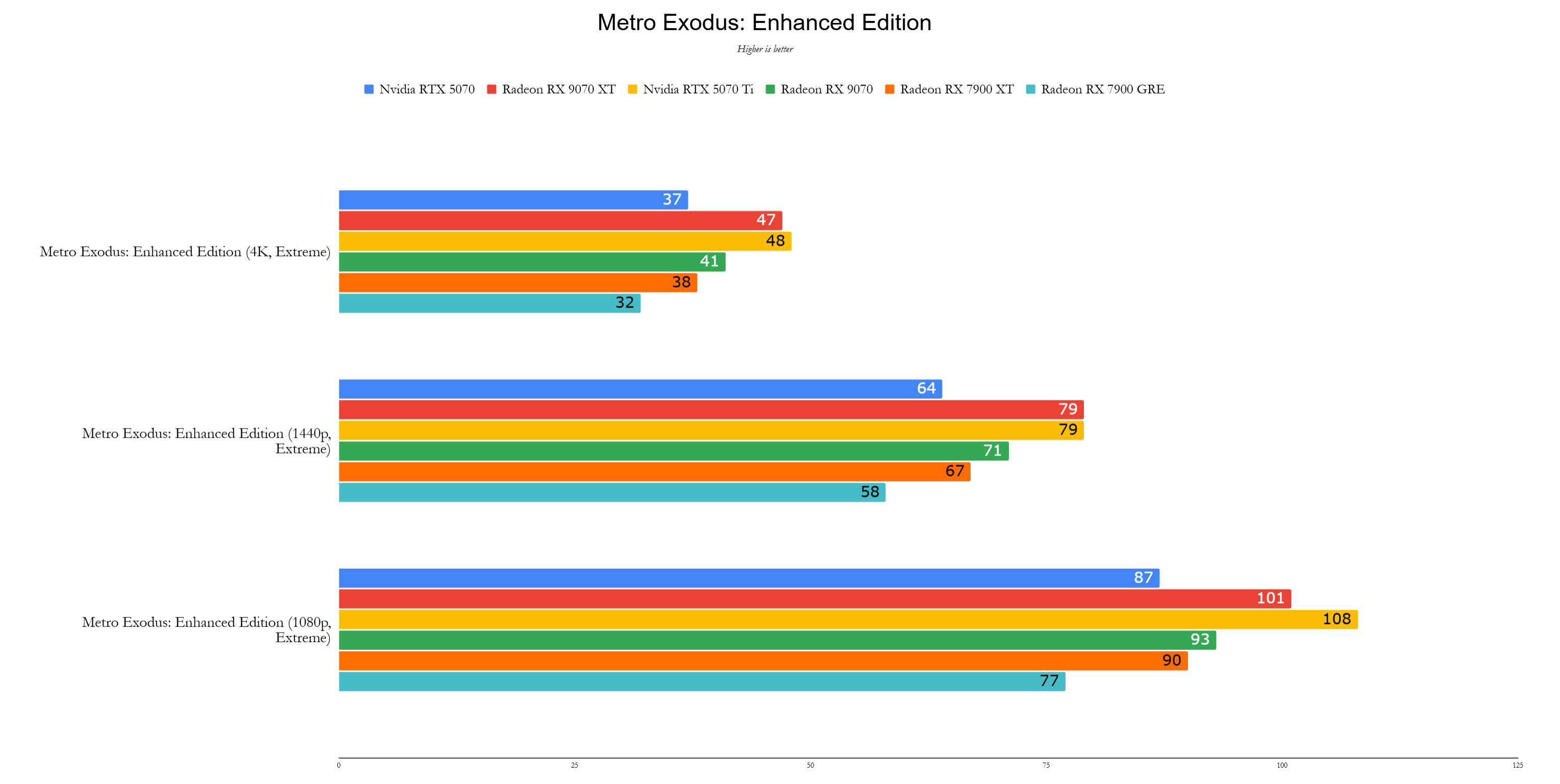
Priced at $549, the AMD Radeon RX 9070 outperforms the Nvidia GeForce RTX 5070 in most scenarios. At 1440p, it's on average 12% faster than the RTX 5070 and 22% faster than its predecessor, the RX 7900 GRE, despite having 30% fewer cores.
The review unit was a factory overclocked Gigabyte Radeon RX 9070 Gaming OC, with a reported boost clock of 2,700Mhz, suggesting a 4-5% performance boost.
All tests were conducted using the latest public drivers at the time of writing, with review drivers provided for the RX 9070, 9070 XT, and RTX 5070.
In 3DMark, the RX 9070 performs comparably to the RTX 5070 in the Speed Way test with ray tracing (5,828 vs. 5,845 points) but significantly better in Steel Nomad without ray tracing (6,050 vs. 5,034 points).
In Call of Duty: Black Ops 6 at 1440p with FSR 3 set to Balanced, the RX 9070 achieves 165 fps, compared to 131 fps for the RTX 5070 and 143 fps for the RX 7900 GRE.
Cyberpunk 2077 at 1440p with Ray Tracing Ultra sees the RX 9070 slightly ahead of the RTX 5070 by 3%, a notable achievement given the game's Nvidia bias.
Metro Exodus, tested without upscaling, shows the RX 9070 leading with 71 fps against the RTX 5070's 64 fps.
Red Dead Redemption 2 at 1440p using Vulkan yields 142 fps for the RX 9070, significantly outperforming the RTX 5070's 115 fps.
In Total War: Warhammer 3, the RX 9070 and RTX 5070 are neck and neck at 1440p, with 135 fps and 134 fps, respectively.
Assassin's Creed Mirage at 1440p with the Ultra preset and FSR set to Balanced sees the RX 9070 at 193 fps, compared to 163 fps for the RTX 5070.
Black Myth Wukong at 1440p with the Cinematic preset results in a close race, with the RX 9070 at 67 fps and the RTX 5070 at 66 fps.
Forza Horizon 5 at 1440p shows the RX 9070 at 185 fps, outperforming the RTX 5070's 168 fps and the RX 7900 GRE's 152 fps.
The Radeon RX 9070's launch timing against the RTX 5070 benefits AMD, as it offers superior performance at the same $549 price point. With 16GB of VRAM, the RX 9070 is better equipped for future-proofing, making it a compelling choice over the RTX 5070, even if the latter uses GDDR7.
AMD Radeon RX 9060 XT Confirmation Revealed
AMD has officially unveiled the Radeon RX 9060 XT at Computex 2025, building on the success of the RX 9070 XT released in March. While the details remain sparse, this mid-range graphics card promises exciting features for gamers. The AMD Radeon RX 9060 XT comes equipped with 32 Compute Units and a s
May 23,2025
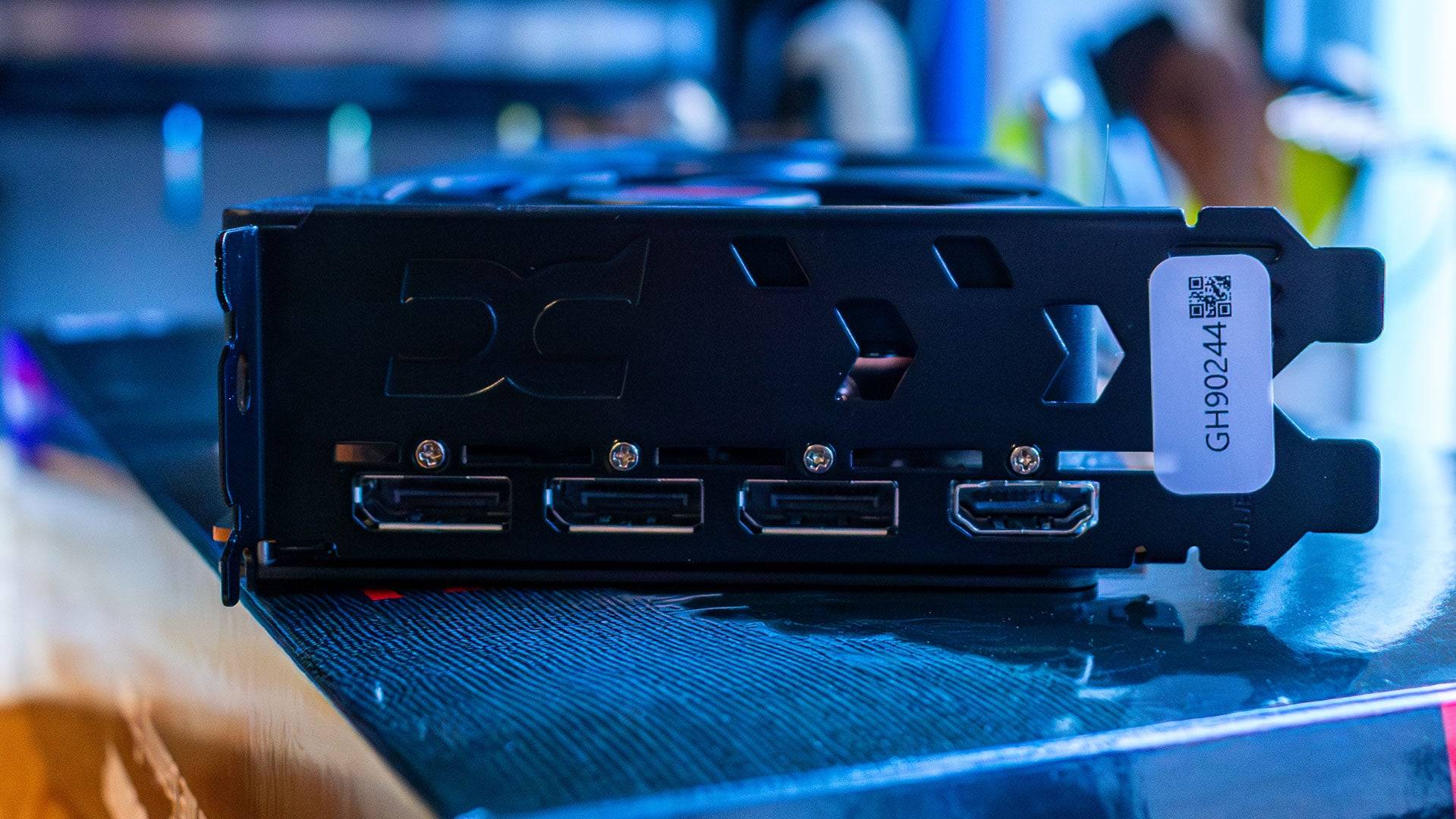
AMD Radeon RX 9070 XT: In-Depth Review
For the last few generations, AMD has been striving to match Nvidia at the high end. However, with the introduction of the AMD Radeon RX 9070 XT, Team Red has shifted its focus away from the ultra-high-end segment dominated by the RTX 5090, and instead, targeted the majority of gamers with a graphic
May 22,2025
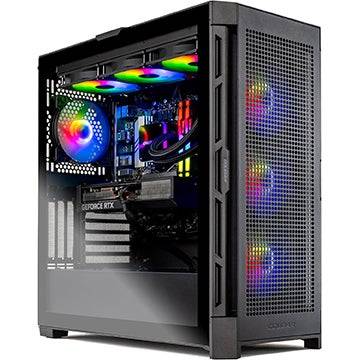
Amazon Slashes Price on AMD Radeon RX 9070 XT Gaming PC
Amazon is currently offering an exceptional deal on a high-performance gaming PC featuring the newly released AMD Radeon RX 9070 XT. The Skytech Blaze4 RX 9070 XT gaming desktop is now available for just $1,599.99 after a $100 instant discount, making it one of the most compelling prebuilt options o
Jul 24,2025
Girls Frontline 2: Exilium Global Website Goes Live, Along With Its Socials!
Marvel Rivals: Understanding Bussing and Catching It
New Game Plus in Assassin's Creed Shadows: Confirmed?
Top Skills to Prioritize for Yasuke in Assassin’s Creed Shadows
Assassin’s Creed Shadows Movements Reviewed by Two Parkour Athletes
Death Stranding 2 Release Date Unveiled in Massive Trailer
Pokemon GO Leak Teases New Adventure Effects
Top 25 Action Films Ever Ranked

Nintendo Denies Amazon Removal Over Sales Dispute
Dec 21,2025
Nintendo Switch Online Teases Smash Bros. for N64
Dec 21,2025

All's Justice in My Hero Academia: Release Date & Time
Dec 20,2025
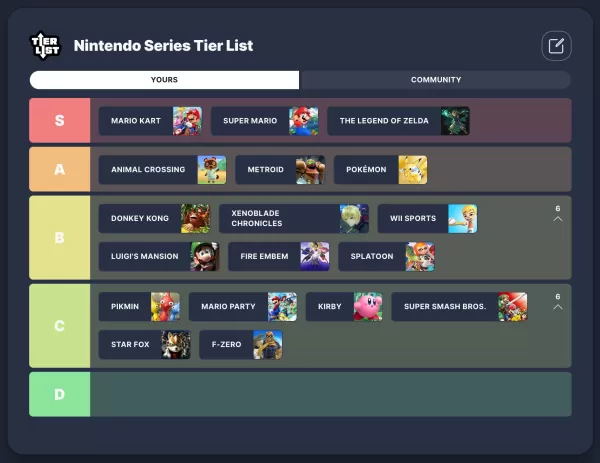
Is Mario Kart Top Tier? Ranking Nintendo's Biggest Franchises
Dec 19,2025

Billie Piper Returns to Doctor Who, Role Speculated
Dec 19,2025